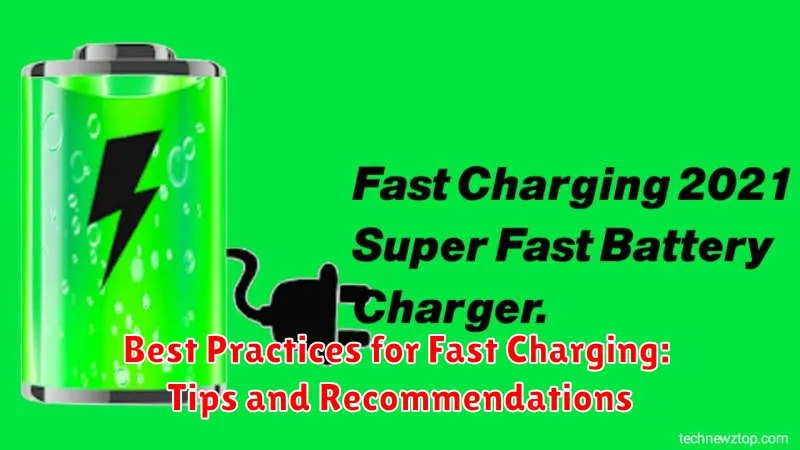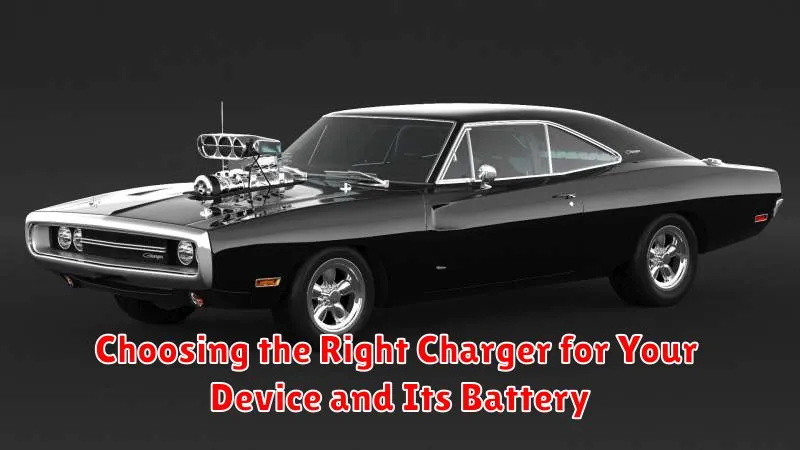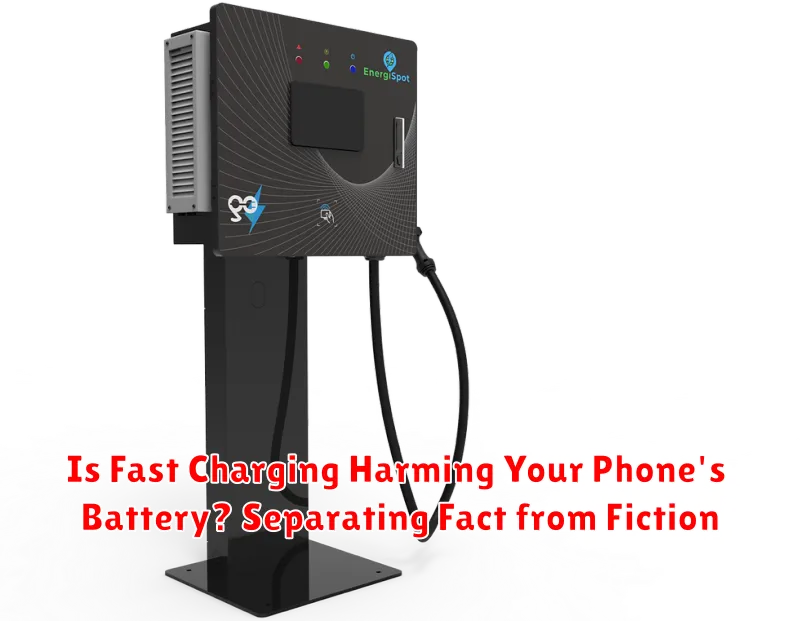Are you constantly tethered to a charger, relying on fast charging to keep your phone alive throughout the day? With the prevalence of fast charging technology in modern smartphones, it’s a valid concern whether this convenient feature comes at the cost of long-term battery health. This article delves into the science behind fast charging, addressing the common anxieties surrounding its potential to damage phone batteries. We’ll separate the facts from fiction, exploring the actual impact of fast charging on battery lifespan and offering practical tips for maintaining optimal battery performance.
The debate over fast charging’s effect on phone batteries continues to spark discussions among tech enthusiasts and everyday users alike. Concerns range from accelerated battery degradation and overheating to potential safety hazards. However, understanding the underlying mechanisms of fast charging and the advancements in battery technology is crucial to dispelling misconceptions. Join us as we unpack the truth about fast charging and its relationship with battery health, empowering you to make informed decisions about charging your device and maximizing its battery longevity.
Understanding Fast Charging Technology and Its Mechanisms
Fast charging technologies accelerate battery charging by delivering higher currents or higher voltages, or a combination of both, compared to conventional charging. This increased power input allows for a significantly faster replenishment of the battery’s charge.
Most fast charging systems employ a dedicated charging circuit that regulates the power flow to the battery. This circuit manages the charging process by adjusting voltage and current levels to optimize charging speed while preventing overheating and damage to the battery. Efficient thermal management is crucial to dissipate the extra heat generated during fast charging.
Different fast charging standards, such as Quick Charge, Power Delivery, and Adaptive Fast Charging, utilize varying protocols and power outputs. Understanding the specific fast charging standard supported by your phone and charger is essential for optimal performance and safety. It’s also important to note that the charging speed generally tapers off as the battery nears full capacity to protect it from overcharging.
Debunking Common Myths about Fast Charging and Battery Health
Several misconceptions surround fast charging technology and its impact on battery health. Let’s address some of the most prevalent myths.
Myth 1: Fast Charging Will “Fry” Your Battery
Modern smartphones incorporate sophisticated power management systems designed to prevent overcharging. These systems regulate the charging process, ensuring the battery receives the correct voltage and current, even with fast charging. Therefore, the notion that fast charging will inherently damage your battery is inaccurate.
Myth 2: You Should Only Use the Charger That Came With Your Phone
While using the manufacturer-provided charger is generally recommended, using other reputable and certified fast chargers will not necessarily harm your battery. The critical factor is ensuring the charger is compatible with your device’s charging standards and certified for safety.
Myth 3: Fast Charging Significantly Reduces Battery Lifespan
While all charging methods contribute to some degree of battery degradation over time, studies suggest the impact of fast charging is relatively minor compared to other factors like high temperatures and deep discharge cycles. Properly managed fast charging is unlikely to drastically shorten your battery’s lifespan.
The Potential Impacts of Fast Charging on Long-Term Battery Life
While fast charging offers undeniable convenience, it’s essential to acknowledge its potential impact on long-term battery health. The accelerated chemical reactions during fast charging generate more heat than standard charging. This elevated temperature, while generally managed within safe limits by modern devices, can contribute to slightly increased battery degradation over time.
The primary concern isn’t a dramatic reduction in lifespan, but rather a gradual decrease in overall capacity. Think of it like a car engine running hotter at higher speeds – it can still perform well, but might wear down slightly faster. The impact of fast charging on battery longevity remains a subject of ongoing research, but current evidence suggests a modest effect, not a catastrophic one. This effect is often outweighed by the benefits of convenience for most users.
Factors like ambient temperature, charging cycle frequency, and the specific fast charging technology implemented all play a role in influencing the overall impact. Generally, charging a battery from a very low percentage to a very high percentage repeatedly can contribute to more stress than topping off the charge more frequently.
Optimizing Your Charging Habits for Battery Longevity
Maintaining healthy charging habits can significantly extend your phone’s battery lifespan. Avoid consistently charging to 100% or depleting it to 0%. Ideal battery levels are between 20% and 80%. Regularly cycling within this range minimizes stress on the battery.
Temperature also plays a key role. Avoid charging in excessively hot or cold environments, as extreme temperatures can accelerate battery degradation. If your phone feels hot while charging, remove its case or relocate it to a cooler area.
While convenient, overnight charging isn’t optimal for long-term battery health. Consider charging your phone to a sufficient level before bed and then topping it off in the morning if necessary. Using a lower-powered charger when practical also reduces strain on the battery.
Identifying Signs of Battery Damage and Degradation
Over time, all batteries degrade, experiencing a reduction in their capacity to hold a charge. This is a normal process, but certain signs may indicate accelerated degradation or damage. Being aware of these signs can help you take proactive steps to manage your battery’s health.
One of the most obvious signs is significantly reduced battery life. If you find your phone needing a charge much more frequently than it used to, even with similar usage patterns, it could point to battery degradation. Rapid discharging is another key indicator. This occurs when your phone’s battery percentage drops quickly, even when not in heavy use.
Overheating, especially during charging or normal use, can be a symptom of battery damage. While some warmth is expected during charging, excessive heat should be a cause for concern. Similarly, physical swelling or bulging of the battery is a serious sign of damage and requires immediate attention. If you notice any distortion in your phone’s case or the battery itself, discontinue use immediately and consult a professional.
Finally, unexpected shutdowns, particularly when the battery indicator shows a reasonable charge remaining, may also suggest battery problems. If your phone consistently powers off before the battery reaches zero, it’s important to investigate the cause.
Best Practices for Fast Charging: Tips and Recommendations

While fast charging is generally safe, following best practices can help maximize your battery’s lifespan and maintain optimal charging performance. Using the charger supplied with your device is the most crucial step. This ensures compatibility and safeguards against potential damage.
Avoid charging your phone overnight. Prolonged exposure to a fully charged state can contribute to battery degradation. Aim to unplug your device once it reaches 100%.
Keep your phone cool while charging. High temperatures can negatively impact battery health. Avoid charging in direct sunlight or excessively hot environments.
Occasionally, letting your battery drain to around 20% before recharging can help recalibrate the battery meter and potentially improve its accuracy.
When to Avoid Fast Charging: Protecting Your Battery in Extreme Conditions
While fast charging is generally safe, certain extreme conditions can compromise its effectiveness and potentially harm your battery. Avoid fast charging in excessively hot or cold temperatures. High temperatures can exacerbate heat generated during fast charging, leading to accelerated degradation. Conversely, extremely cold temperatures can hinder the chemical reactions within the battery, making fast charging inefficient and potentially damaging.
If your phone feels unusually hot while fast charging, disconnect it immediately and let it cool down before resuming charging, even at a slower rate. Avoid leaving your phone in direct sunlight or hot cars, especially while plugged in. Similarly, in extremely cold environments, allow your phone to warm up to a more moderate temperature before initiating a fast charge.
Another situation to avoid fast charging is when your phone’s battery is already nearing 100% charge. The last few percentage points of a charge cycle often utilize a slower “trickle charge” to protect the battery from overcharging. Fast charging during this phase can bypass this safeguard, potentially stressing the battery.
Choosing the Right Charger for Your Device and Its Battery

Using the correct charger plays a crucial role in preserving your battery’s health and ensuring optimal charging speeds. Not all chargers are created equal, and using an incompatible or substandard charger can lead to various issues, including slower charging, overheating, and even battery damage.
Always prioritize using the charger that came with your device. Manufacturers design these chargers specifically for their products, optimizing the charging process for the specific battery chemistry and capacity. If a replacement is needed, choose a charger from a reputable brand that is explicitly certified for your device’s make and model. Check for compatibility certifications or logos to ensure safety and performance.
Pay attention to the charger’s power output (wattage). While a higher wattage generally means faster charging, using a charger with significantly higher output than your device supports isn’t necessarily beneficial and could potentially stress the battery. Conversely, a charger with too low a wattage may charge your device very slowly or not at all.
Consider the charging cable as well. Damaged or low-quality cables can hinder charging efficiency and even pose safety risks. Opt for durable, well-made cables from trusted sources.
Effective Battery Care Strategies Beyond Fast Charging
While fast charging is a convenient feature, several other practices contribute to long-term battery health. Managing temperature is crucial. Avoid exposing your device to extreme heat or cold, as this can accelerate battery degradation.
Optimizing software also plays a role. Keep your operating system and apps updated, as updates often include battery optimization features. Background processes consume power; limit unnecessary apps running in the background.
Mindful charging habits can also make a difference. Avoid consistently charging to 100% or letting the battery drain to 0%. Partial charging cycles are generally less stressful on the battery than full cycles. If you plan on storing your device for an extended period, store it with a partially charged battery, ideally around 50%.

